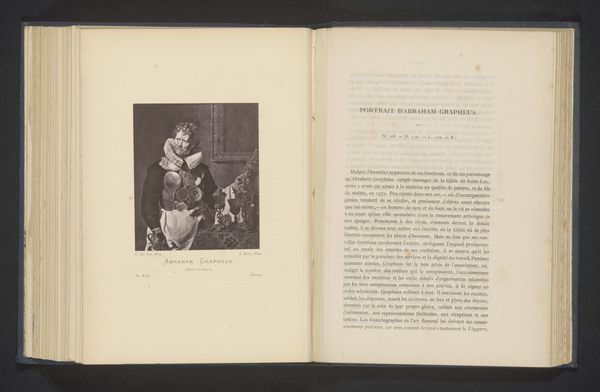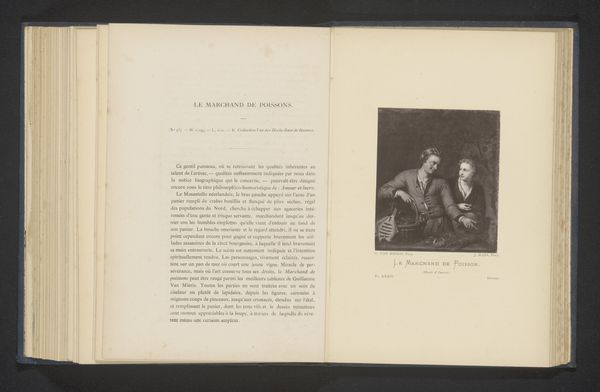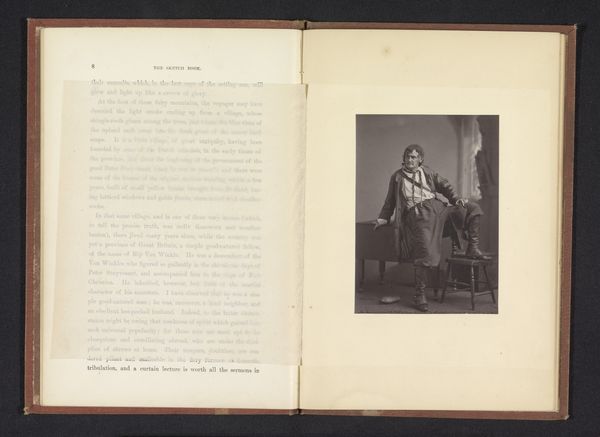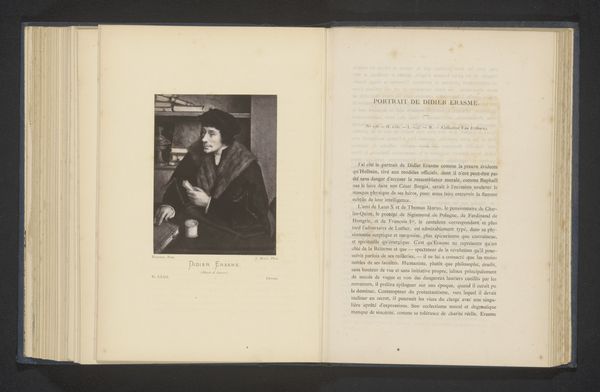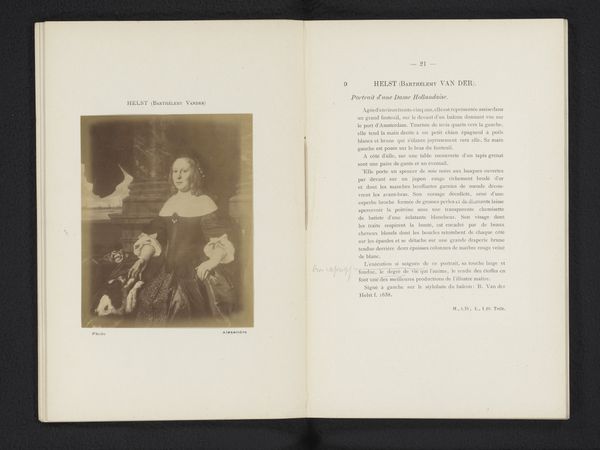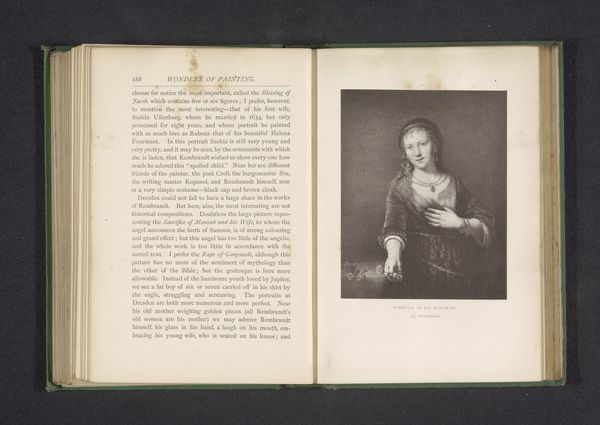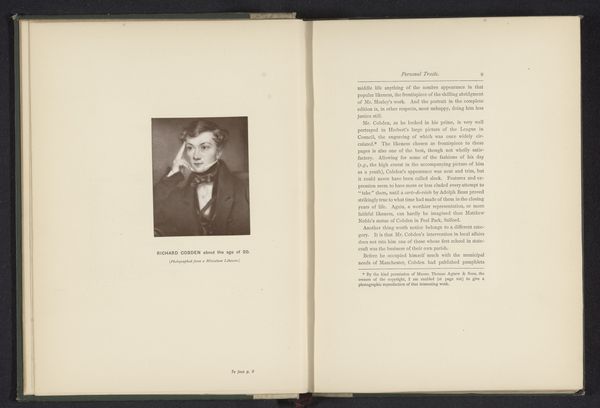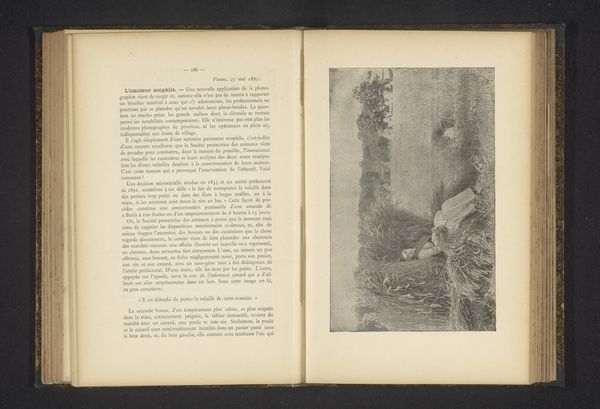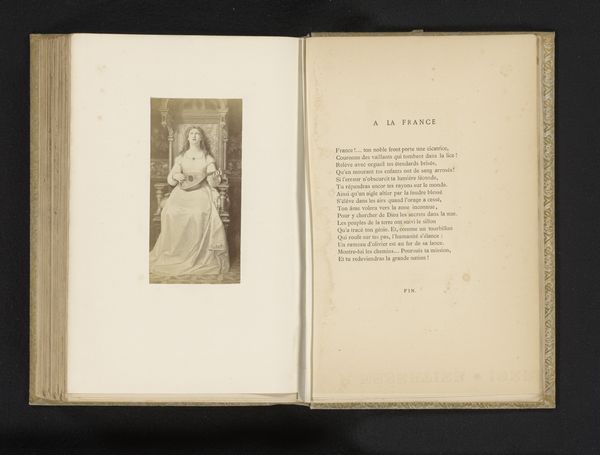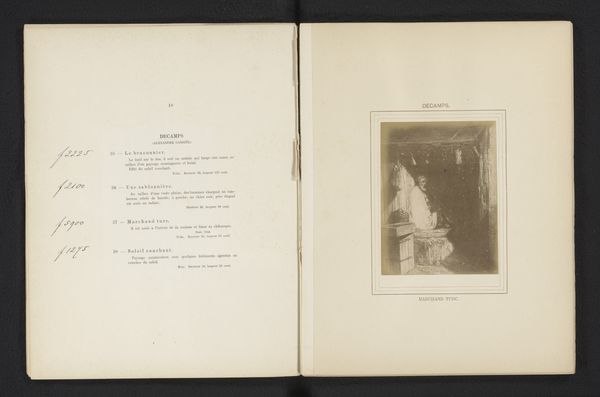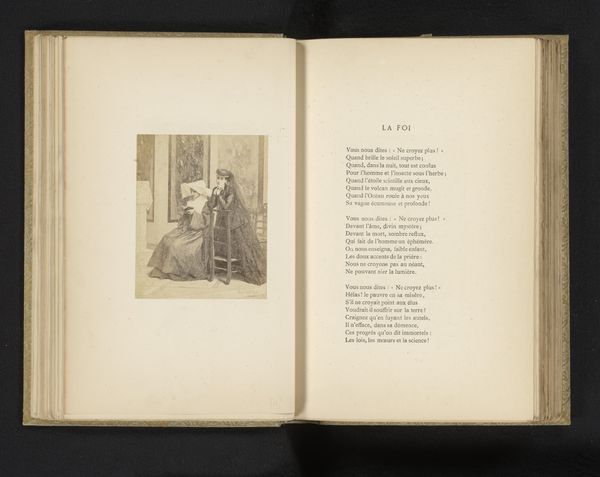
drawing, print, etching, engraving
#
portrait
#
drawing
# print
#
etching
#
genre-painting
#
engraving
#
realism
Dimensions: height 108 mm, width 85 mm
Copyright: Rijks Museum: Open Domain
Curator: This is a reproduction of "The Smoker," or "De Roker," by Adriaen van Ostade, dating to before 1877. It's presented as an etching or engraving within what appears to be a book or portfolio. Editor: It certainly captures a moment of quiet contemplation. The light seems to emphasize the figure's face, drawing attention to his upward gaze and the smoke curling from his pipe. It's quite moody. Curator: Genre paintings like this, especially depictions of everyday people smoking, were fairly popular in the 17th century Dutch Republic. They offered a glimpse into the lives of ordinary citizens, and often served as moralizing statements. Editor: You can see the strong contrasts—a typical play between dark and light that gives it weight, even considering its location inside of a printed volume, bound together. Ostade used lines effectively to render textures and forms. I love how the smoke delicately balances against his somewhat worn clothing. Curator: Yes, the reproduction in this context is fascinating too. Consider that the artist, Joseph Maes, lived in a period when printmaking was booming. The ready availability of prints democratized art, disseminating it to wider audiences and creating a whole new market. Editor: From a compositional view, the pipe leads the eye right up to his thoughtful face, directing your visual path along with the tendrils of smoke as it dances. The overall grayscale creates an immediate nostalgic and vintage feel. Curator: Perhaps it spoke to the romanticisation of the lower classes at that point, or provided visual proof of the growing influence of everyday working folks. It also reflected broader social acceptance and a move towards a culture centered on leisure. Editor: Looking at the details once more, I think I now also enjoy how he has been framed inside a window: he is a voyeur gazing in on this man. Curator: Indeed, and with that new layer, we find there may be so much more here, that Ostade wanted to create an enduring social snapshot, which became a reflection on an artist, his subject, and its culture, now. Editor: Exactly. Art, in that fashion, transcends time and becomes ever so much more, in ways unimaginable for the first artist.
Comments
No comments
Be the first to comment and join the conversation on the ultimate creative platform.
